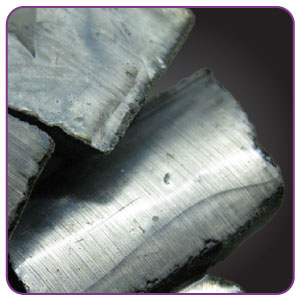
| Symbol | K |
| Atomic Number | 19 |
| Atomic Mass | 39.0983 amu |
| Discovered by | Humphry Davy in 1807 |

Table of Contents
- Element Data
- What is Potassium?
- Potassium metal
- Isotopes of Potassium
- Uses of Potassium
- Physical and Chemical Properties Of Potassium
- Certain Facts About Potassium
- Frequently Asked Questions – FAQs
Element Data
| Group | 1 | Melting point | 63.5°C, 146.3°F, 336.7 K |
| Period | 4 | Boiling point | 759°C, 1398°F, 1032 K |
| Block | s | Density (g cm−3) | 0.89 |
| Atomic number | 19 | Relative atomic mass | 39.098 |
| State at 20°C | Solid | Key isotopes | 39K |
| Electron configuration | [Ar] 4s1 | CAS number | 7440-09-7 |
| ChemSpider ID | 4575326 | ChemSpider is a free chemical structure database | |
What is Potassium?
- Potassium is the first element of the fourth period (row) in the periodic table.
- The atomic mass of potassium is 39.098 atomic mass units. It is denoted by the symbol ‘K’.
- The term potassium arises from a material called Potash.
- The element has been in use for hundreds of years.
- It is an alkali metal along with lithium, rubidium, sodium, caesium, and francium
- It is a very active metal and never occurs free in nature and it always forms a compound with other elements.
Isotopes of Potassium
Potassium usually has three isotopes, it goes by the name of potassium-39, 40 and 41. The potassium-40 is highly radioactive and can be found in rocks, plants, and animals. It is used to measure the age of objects. This isotope breaks down into an isotope of argon.
Uses of Potassium
- It can be used as a medium of heat exchange and used in nuclear power plants because of this reason
- People use potassium salts as a constituent of fertiliser.
- It is one of the essential nutrients of the human body
- Potassium chloride is also used in injections.
- Potash can be used to make glass and soap etc
Physical and Chemical Properties Of Potassium
- It is a soft and shiny metal which has a melting point of 63 degrees celcius and a boiling point of 770 degrees.
- Potassium metal can float on water
- It reacts with water violently and gives hydrogen which can actually catch fire and may explode
- It can readily react with chlorine, fluorine, sulphur, nitrogen and phosphorus.
- It has a green vapour and lavender-coloured flame
- It is ranked as the 7th most abundant element present in the earth’s crust.
- The element is always traced in combination with other elements.
- Once isolated, potassium turns into a malleable metal with a silver colour profile.
- Potassium reacts with water violently and gives off hydrogen gas.
Certain Facts About Potassium
- The symbol of Potassium (K) signifies the term Kalium.
- It is an ancient term used to label the element and has its roots in the term “alkali.”
- Like the other elements in the first column, potassium is associated with the alkali group with caesium and sodium.
- It was the first metal to get isolated by electrolysis.
Frequently Asked Questions – FAQs
What is potassium metal used for?
It is used in fertilizers, as a salt substitute and to produce other chemicals. Potassium hydroxide (KOH) is used to make soaps, detergents and drain cleaners.
What are the industrial uses of potassium?
Industrial applications for potassium include soaps, detergents, gold mining, dyes, glass production, gunpowder, and batteries. Potassium also plays a vital role in our bodies.
Who discovered potassium for the first time?
In 1807 Sir Humphry Davy discovered the element potassium.
Why is K the symbol for potassium?
The word potassium stems from the English “pot ash,” which was used to isolate potassium salts. We get K from the name kalium, given by the German chemist Martin Heinrich Klaproth, which stemmed from alkali, which stemmed from the Arabic al-qalyah, or “plant ashes.”


very useful
very helpful and useful as well!! thank u